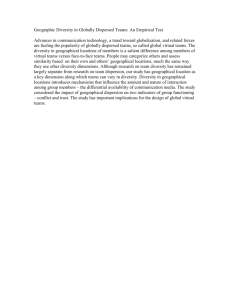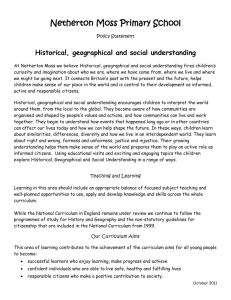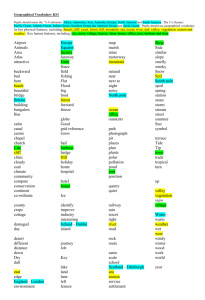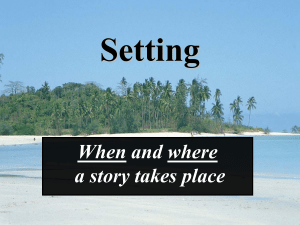Map #1: AP World History World Regions – a Big Picture View
advertisement
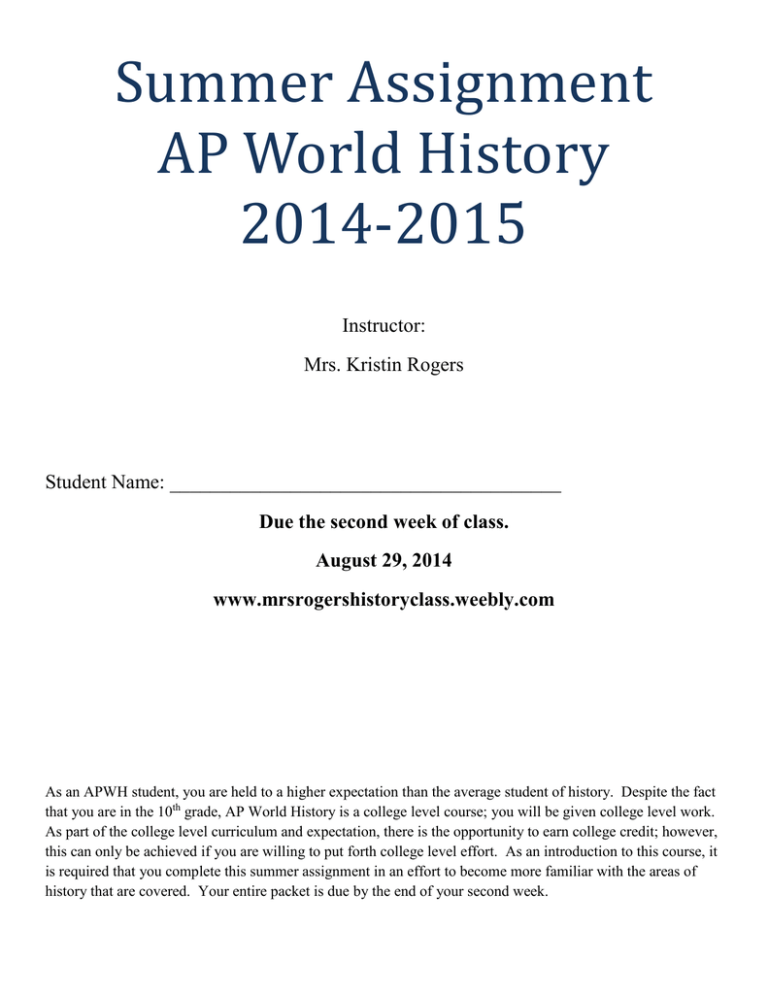
Summer Assignment AP World History 2014-2015 Instructor: Mrs. Kristin Rogers Student Name: _______________________________________ Due the second week of class. August 29, 2014 www.mrsrogershistoryclass.weebly.com As an APWH student, you are held to a higher expectation than the average student of history. Despite the fact that you are in the 10th grade, AP World History is a college level course; you will be given college level work. As part of the college level curriculum and expectation, there is the opportunity to earn college credit; however, this can only be achieved if you are willing to put forth college level effort. As an introduction to this course, it is required that you complete this summer assignment in an effort to become more familiar with the areas of history that are covered. Your entire packet is due by the end of your second week. Part I: Geographical Coverage Students need basic geographical knowledge in order to understand world history. The two maps that follow give students a starting point for identifying regions and their locations relative to other regions and landforms. Geospatial awareness is fundamental knowledge for students to build an understanding of cross-cultural contacts, trade routes, migrations, etc., which constitute the key concepts in the AP World History course. Materials: Internet, maps provided, colored pencils Directions: Please input the following information on the two maps provided. Map #1: AP World History – World Regions, a big picture view. o Label the following features on the map and color in the geographical borders: The Americas Europe Africa Asia Oceania Atlantic Ocean Pacific Ocean Indian Ocean Arctic Ocean Map #2: AP World History – World Regions, a closer look o This map identifies the various sub-regions within the five major geographical regions. These regions will be used repeatedly during the AP World History course and students are expected to learn them. o Label the following sub-regions on the map and color in the geographical borders. Central Asia East Asia South Asia Southeast Asia Middle East North Africa West Africa Central Africa East Africa Southern Africa Sub-Saharan Africa (this will overlap) North America Latin America (will overlap) Caribbean South America Map #1: AP World History World Regions – a Big Picture View Map #2: AP World History World Regions – A Closer Look Part II: Vocabulary Understanding vocabulary is an important component of the study of world history. In order to gain a greater understanding of the subject, there are certain vocabulary words that students must know. These words will recur throughtout the course. Please follow the directions below: 1. Visit Dictionary and Thesaurus – Merriam-Webster Online: http://www.merriam-webster.com/ 2. Complete the attached chart with the following information: a. Definition of the word. b. Student-created sentence. c. Visual Cue i. Create a picture which represents the word. Vocabulary: democracy oligarchy autocracy capitalism mercantilism socialism communism nationalism civilization theocracy hierarchical agrarian patrilineal matrilineal ascetic Word Democracy Oligarchy Autocracy Capitalism Definition Sentence Visual Cue Word Mercantilism Socialism Commusism Nationalism Theocracy Hierarchichal Definition Sentence Visual Cue Word Agrarian Patrilineal Matrilineal Ascetic Civilization Definition Sentence Visual Cue Part III: Summer Reading Assignment A History of the World in Six Glasses by Tom Standage Directions: You will be required to read the book, “A History of the World in Six Glasses” by Tom Standage. It is recommended that you purchase this book so you can highlight and take notes as necessary. There are many places where you can find a copy of the book that are reasonably priced, like amazon.com. Once you have completed your reading you will need to answer the discussion questions. Each question should be answered with a minimum of 200 words. Also, make sure to use complete sentences. DISCUSSION QUESTIONS 1. Does the structure of the book work as a way of thinking about the history of the world? 2. What global processes does the reader learn about as they learn about these different beverages? 3. What does one learn about class and social structure (and religion) in studying beverages (and/or food)? 4. How do these new drinks become accepted in part through their supposed medicinal value? 5. One criticism of this book is that the author focuses too much on Europe and not on other parts of the world. Do you agree or disagree with this criticism? Which parts of the world do not receive much attention in this book? 6. According to Standage, what is the next drink that will define society? Explain why.
